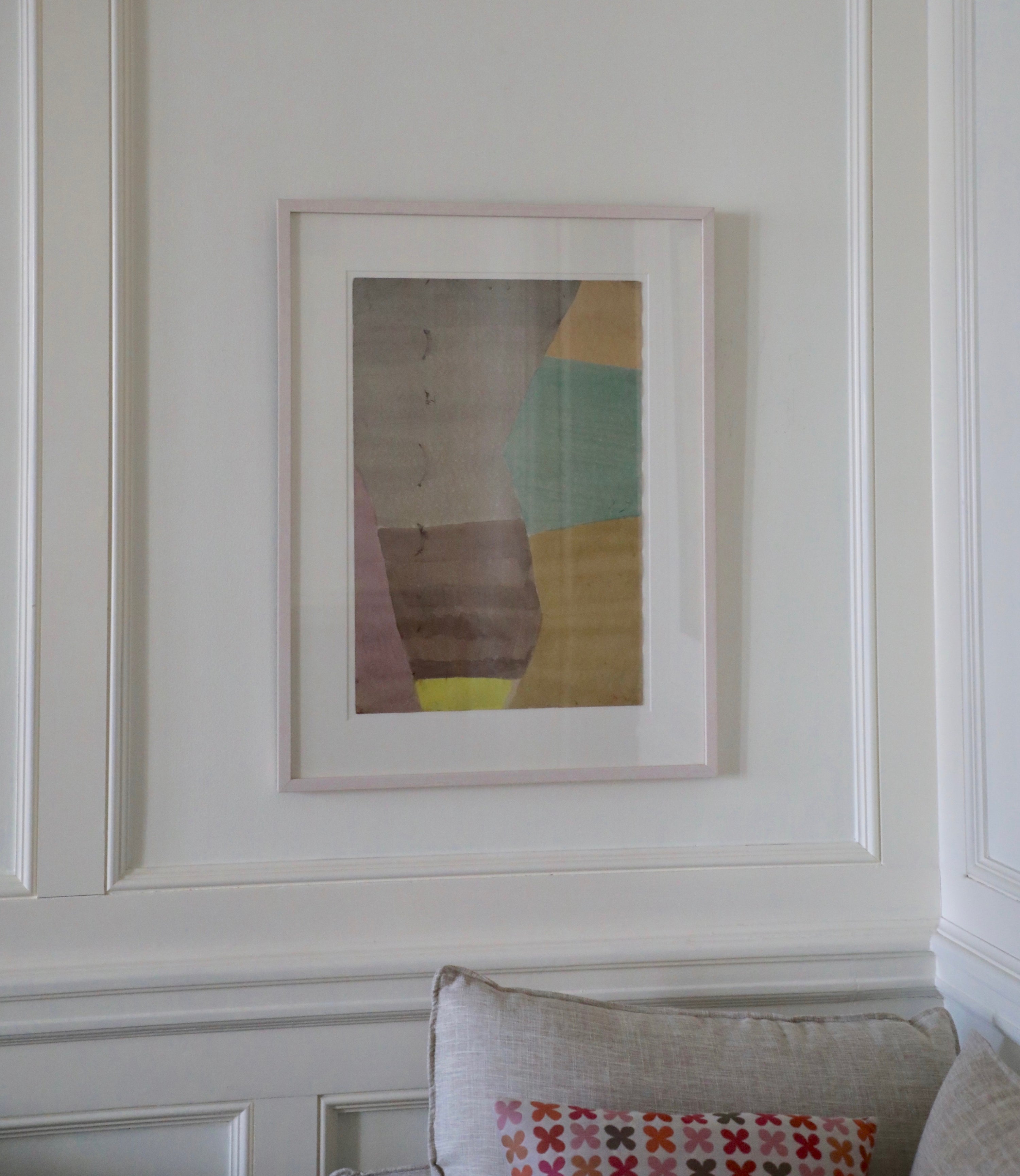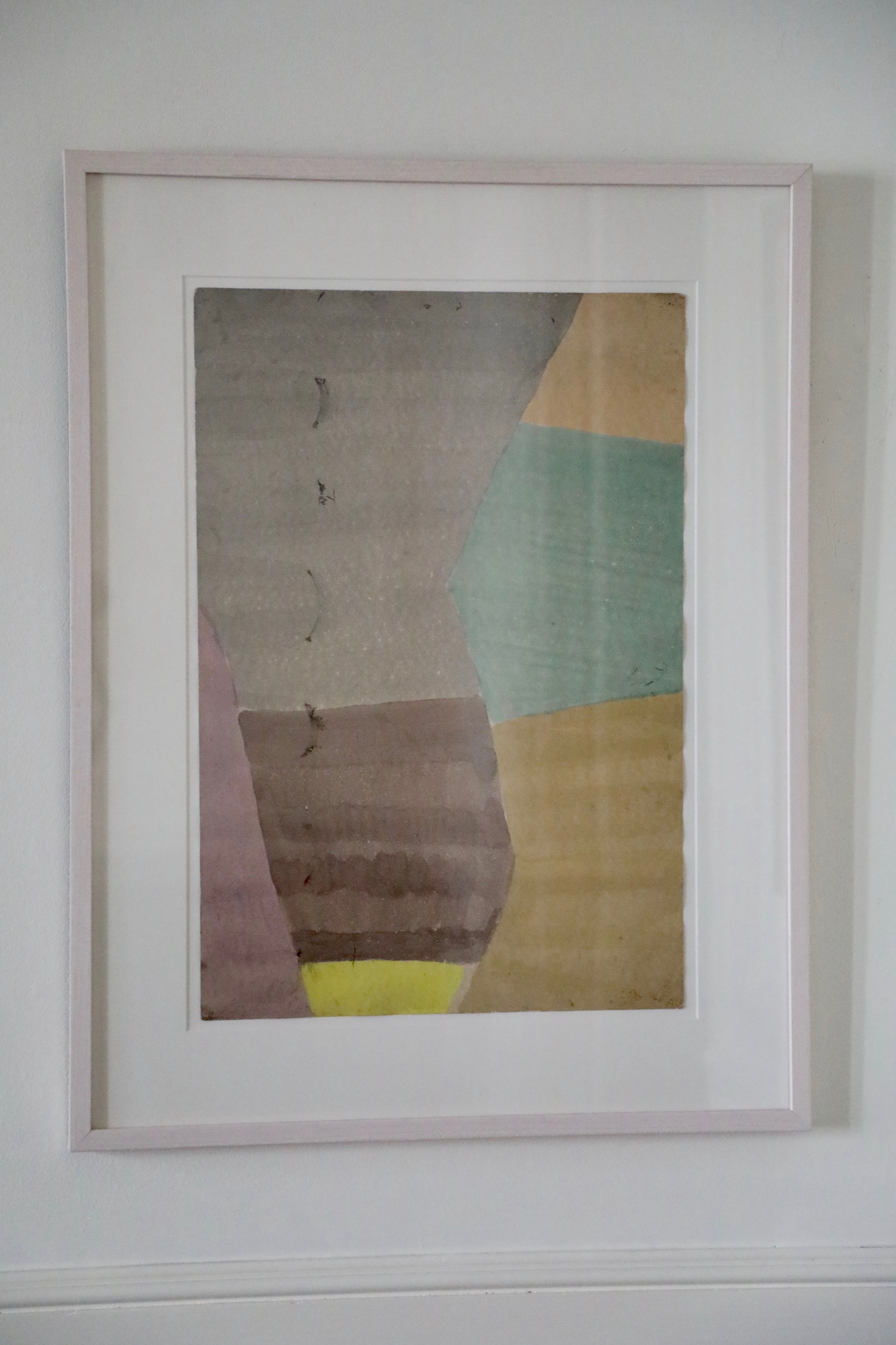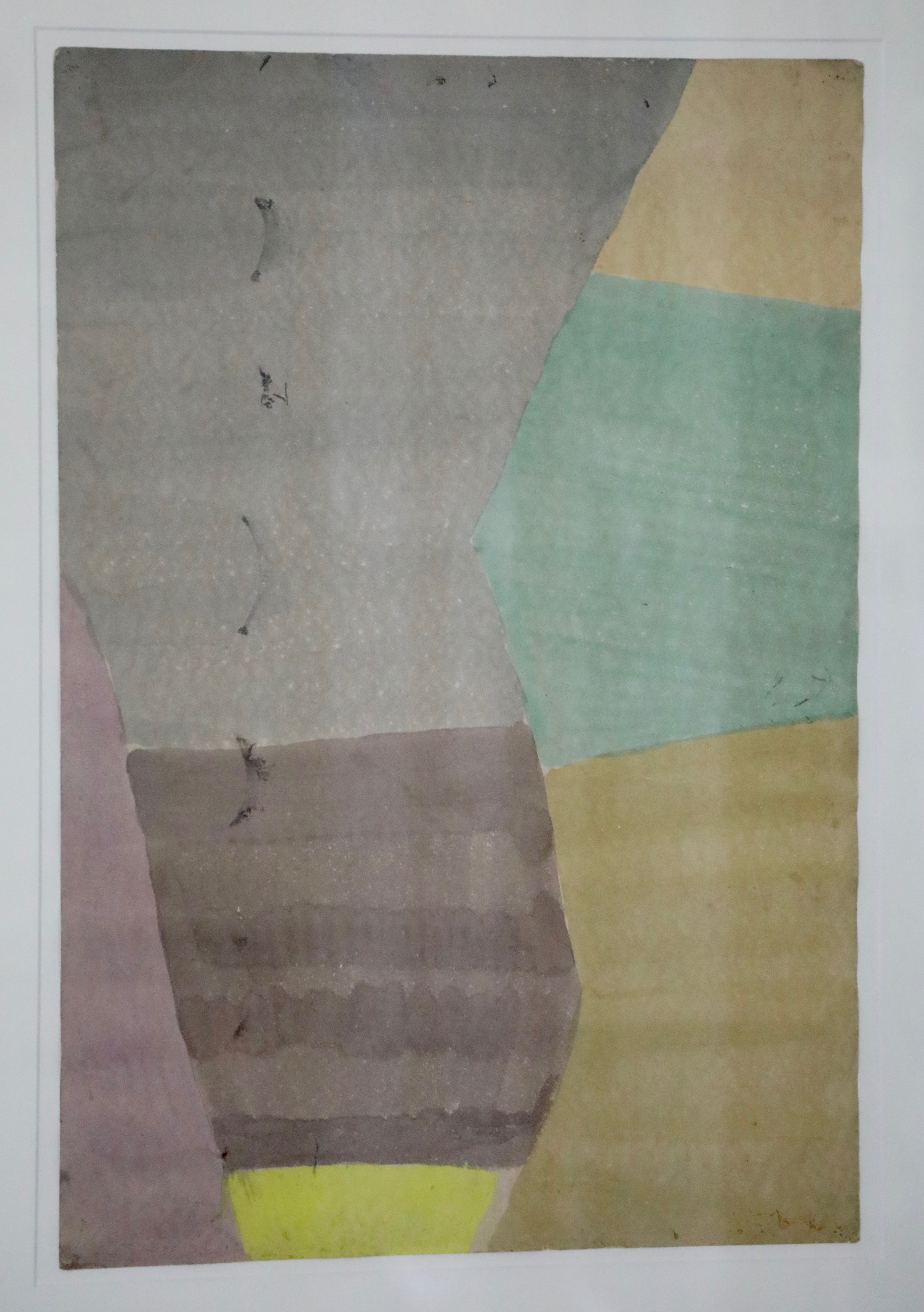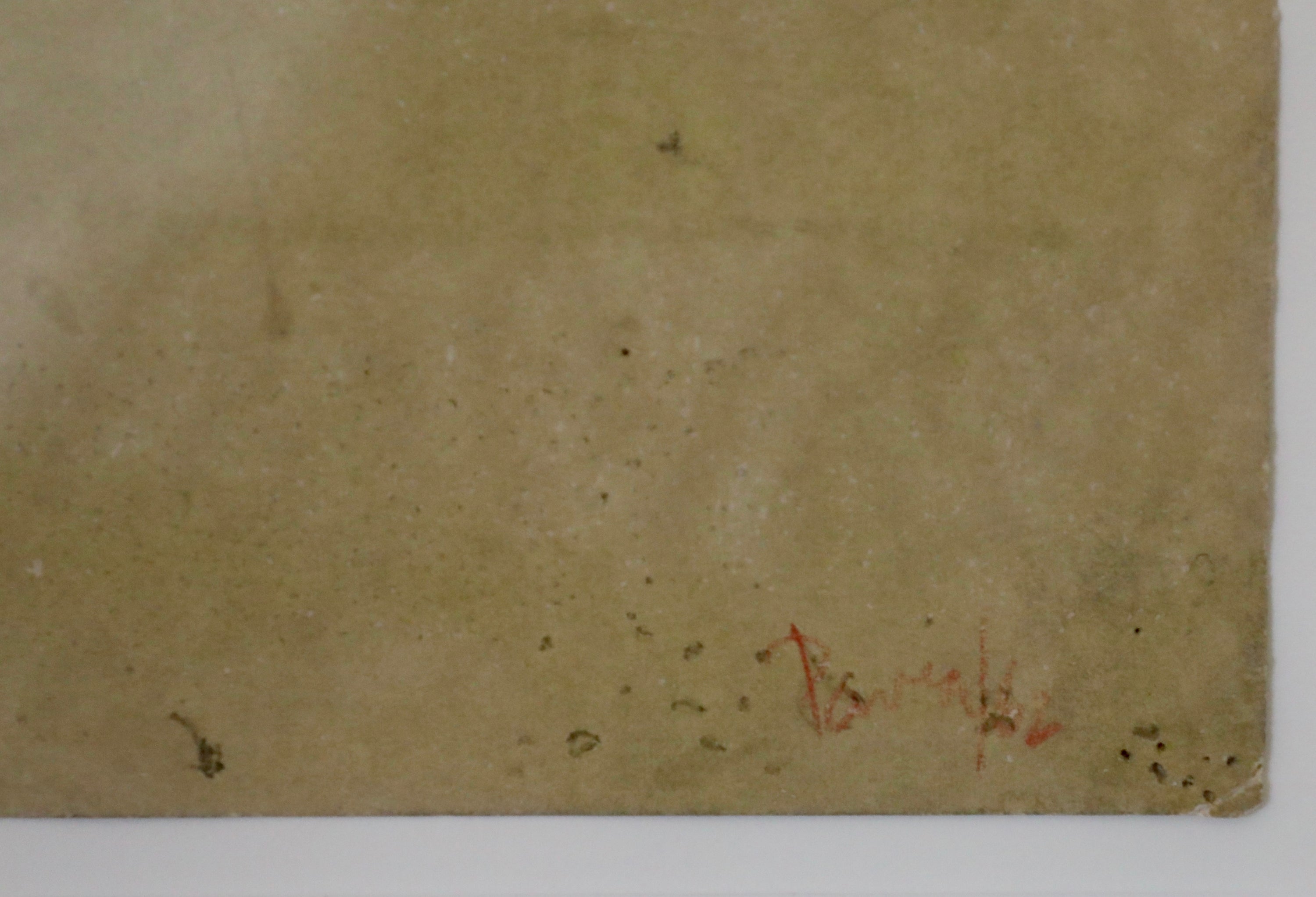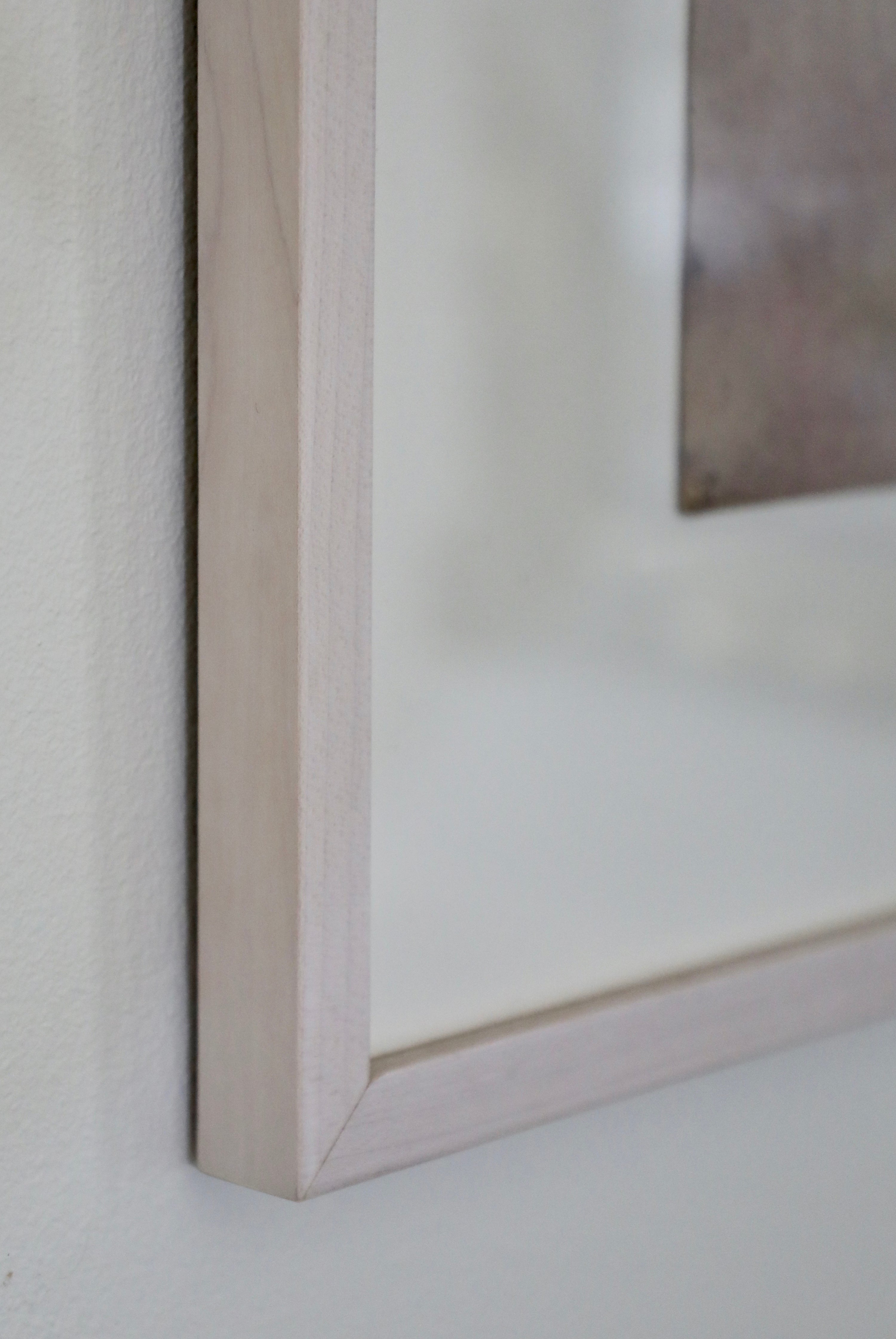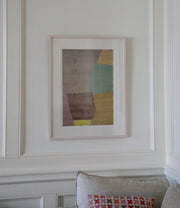Philip Pavia, Slipping Stones No. 20 (1962)
Description
This is a watercolor on paper by noted sculptor Philip Pavia. He had early training in both watercolor and architecture, which is reflected nicely in this work. We love the textured effect creating vertical movement on the left.
Details
- Philip Pavia (American, 1911-2005)
- Slipping Stones No. 20 (1962)
- Watercolor on paper
- Signed and dated in lower right hand corner
- 29 1/2" x 22 1/2" matted and framed in a white-washed wooden frame
About the Artist
Born in Bridgeport, CT in 1911, the son of a stone cutter, Philip Pavia is one of the artists who epitomizes our approach to collecting twentieth century art. The Times of London called Pavia “arguably more of an original than some of his better-known contemporaries.” Primarily a sculptor, he began his education at Yale studying architecture and watercolor, but left after two years for New York and the Art Students League. It was there that he met his lifelong friend, Jackson Pollock. During intermittent study in Paris he made another important friend, Henry Miller, who instilled in him a reverence for pure avant-gardism. Pavia moved back to New York permanently in 1938, and, taking his cue from Miller, became a champion and promoter of independent creative thought. In the late 1940s he was a founding member of the Club, a loose association of artists, writers and other intellectuals in New York that included Willem de Kooning, Barnett Newman, Robert Motherwell and Leo Castelli. In an interview with the New York Times in 2002, Pavia admitted that in part, the Club’s formation was also a response to American artists feeling intimidated by the influx of European modernists who had taken refuge in New York after the war. "[T]here were geniuses walking in the streets, you know. About 30 of them. They included Piet Mondrian, Max Ernst, Joseph Albers, Marcel Breuer, Yves Tanguy…Eventually, the refugees moved uptown, and the Americans decided to take them on." Pavia organized most of the Club's panel discussions during its early years, bringing in Hannah Arendt, Joseph Campbell and John Cage, among others, for informal but spirited debates. Pavia also invited both abstractionists and expressionists to the Club and encouraged their dialogue and interaction, which eventually led to the synthesized term “abstract expressionist.” When the Club became too big for his liking, he quit and established a magazine, It is. A Magazine for Abstract Art. Within the pages he continued to carry the torch of the avant-garde and championed emerging artists, such as Allan Kaprow, Robert Rauschenberg, Helen Frankenthaler, and John Chamberlain.
During these years Pavia also continued his growth as a sculptor. Beginning in the late 50's, Pavia had regular solo and group shows around New York, at the Great Jones, Samuel Kootz and Martha Jackson galleries. His New York Times obituary stated “Mr. Pavia's work was sometimes abstract and sometimes figurative, with works ranging from boulder-size human heads to carefully stacked piles of roughly chiseled marble. One of his best-known pieces, "The Ides of March," is a stark and enigmatic set of four large bronzes in craggy diamond shapes…He also had large marble pieces at various times outside the Cloisters, the Guggenheim and the Cooper-Hewitt.” Pavia's work is included in the collections of institutions such as the Albright-Knox Gallery, the Museum of Metropolitan Art, the Museum of Outdoor Sculpture, the Smithsonian, the National Academy of Design, Hofstra University, and the Museo dei Bozzetti and Museo della Scultura Contemporanea Matera in Italy. Pavia remained productive well into his later years. His last show, at the OK Harris gallery in SoHo, consisted of 12 ghostly terra-cotta heads. Ever the intellectual, he explained that they represented the inside of the skull, not the outside. He passed away in 2005.
This tab content type will accept rich text to help with adding styles and links to additional pages or content. Use this to add supplementary information to help your buyers.
This tab content type will accept rich text to help with adding styles and links to additional pages or content. Use this to add supplementary information to help your buyers.

